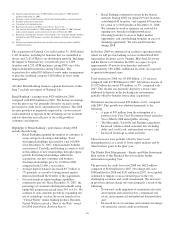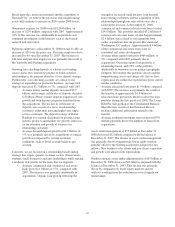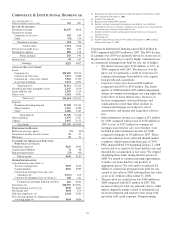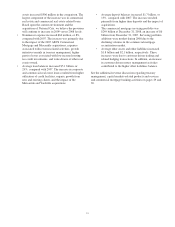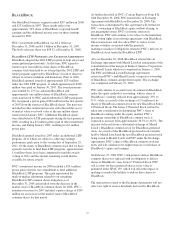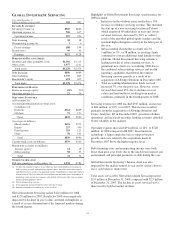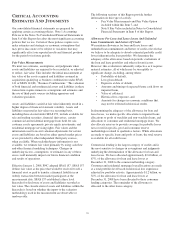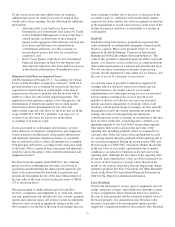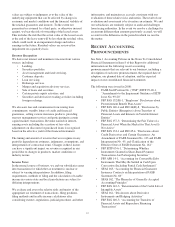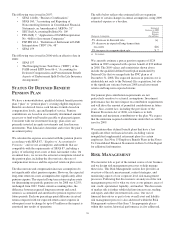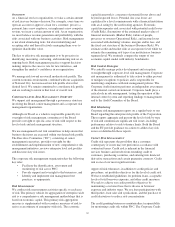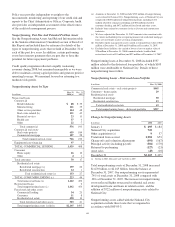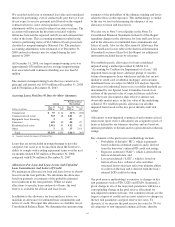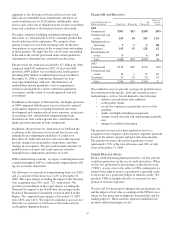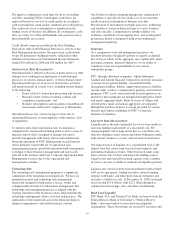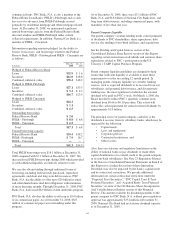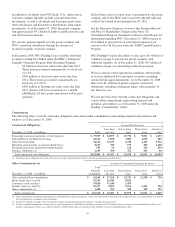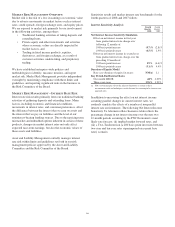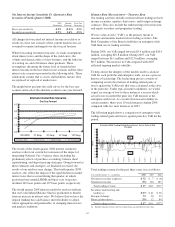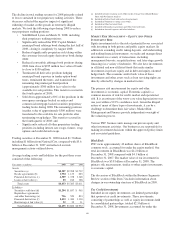PNC Bank 2008 Annual Report Download - page 62
Download and view the complete annual report
Please find page 62 of the 2008 PNC Bank annual report below. You can navigate through the pages in the report by either clicking on the pages listed below, or by using the keyword search tool below to find specific information within the annual report.
The following were issued in 2007:
• SFAS 141(R), “Business Combinations”
• SFAS 160, “Accounting and Reporting of
Noncontrolling Interests in Consolidated Financial
Statements, an Amendment of ARB No. 51”
• SEC Staff Accounting Bulletin No. 109
• FIN 46(R) 7, “Application of FASB Interpretation
No. 46(R) to Investment Companies”
• FSP FIN 48-1, “Definition of Settlement in FASB
Interpretation (“FIN”) No. 48”
• SFAS 159
The following were issued in 2006 with an effective date in
2008:
• SFAS 157
• The Emerging Issues Task Force (“EITF”) of the
FASB issued EITF Issue 06-4, “Accounting for
Deferred Compensation and Postretirement Benefit
Aspects of Endorsement Split-Dollar Life Insurance
Arrangements”
S
TATUS
O
F
D
EFINED
B
ENEFIT
P
ENSION
P
LAN
We have a noncontributory, qualified defined benefit pension
plan (“plan” or “pension plan”) covering eligible employees.
Benefits are derived from a cash balance formula based on
compensation levels, age and length of service. Pension
contributions are based on an actuarially determined amount
necessary to fund total benefits payable to plan participants.
Consistent with our investment strategy, plan assets are
primarily invested in equity investments and fixed income
instruments. Plan fiduciaries determine and review the plan’s
investment policy.
We calculate the expense associated with the pension plan in
accordance with SFAS 87, “Employers’ Accounting for
Pensions,” and we use assumptions and methods that are
compatible with the requirements of SFAS 87, including a
policy of reflecting trust assets at their fair market value. On
an annual basis, we review the actuarial assumptions related to
the pension plan, including the discount rate, the rate of
compensation increase and the expected return on plan assets.
The discount rate and compensation increase assumptions do
not significantly affect pension expense. However, the expected
long-term return on assets assumption does significantly affect
pension expense. The expected long-term return on plan assets
for determining net periodic pension cost for 2008 was 8.25%,
unchanged from 2007. Under current accounting rules, the
difference between expected long-term returns and actual
returns is accumulated and amortized to pension expense over
future periods. Each one percentage point difference in actual
return compared with our expected return causes expense in
subsequent years to change by up to $7 million as the impact is
amortized into results of operations.
The table below reflects the estimated effects on pension
expense of certain changes in annual assumptions, using 2009
estimated expense as a baseline.
Change in Assumption
Estimated
Increase to 2009
Pension
Expense
(In millions)
.5% decrease in discount rate (a)
.5% decrease in expected long-term return
on assets $16
.5% increase in compensation rate $ 2
(a) De minimis.
We currently estimate a pretax pension expense of $124
million in 2009 compared with a pretax benefit of $32 million
in 2008. The 2009 values and sensitivities shown above
include the qualified defined benefit plan maintained by
National City that we merged into the PNC plan as of
December 31, 2008. The expected increase in pension cost is
attributable not only to the National City acquisition, but also
to the significant variance between 2008 actual investment
returns and long-term expected returns.
Our pension plan contribution requirements are not
particularly sensitive to actuarial assumptions. Investment
performance has the most impact on contribution requirements
and will drive the amount of permitted contributions in future
years. Also, current law, including the provisions of the
Pension Protection Act of 2006, sets limits as to both
minimum and maximum contributions to the plan. We expect
that the minimum required contributions under the law will be
zero for 2009.
We maintain other defined benefit plans that have a less
significant effect on financial results, including various
nonqualified supplemental retirement plans for certain
employees. See Note 15 Employee Benefit Plans in the Notes
To Consolidated Financial Statements in Item 8 of this Report
for additional information.
R
ISK
M
ANAGEMENT
We encounter risk as part of the normal course of our business
and we design risk management processes to help manage
these risks. This Risk Management section first provides an
overview of the risk measurement, control strategies, and
monitoring aspects of our corporate-level risk management
processes. Following that discussion is an analysis of the risk
management process for what we view as our primary areas of
risk: credit, operational, liquidity, and market. The discussion
of market risk is further subdivided into interest rate, trading,
and equity and other investment risk areas. Our use of
financial derivatives as part of our overall asset and liability
risk management process is also addressed within the Risk
Management section of this Item 7. In appropriate places
within this section, historical performance is also addressed.
58


